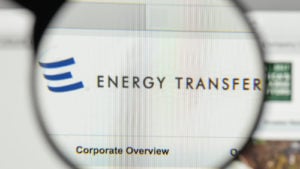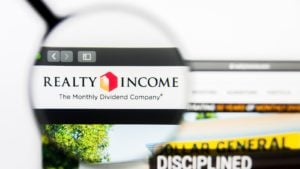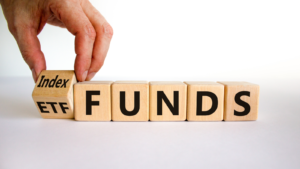Once you reach the age of 73, there’s no getting around Required Minimum Distributions (RMDs). Yet while there’s no getting around making this compulsory withdrawal from your 401(k) or IRA, consider investing it rather than spending it. How? By building a portfolio of the best stocks to buy with RMD proceeds.
For those already generating substantial streams of income from non 401(k) and/or IRA sources, purchasing growth stocks for long-term appreciation may be an option to consider.
If you’re looking to build multigenerational wealth, you may want to consider the stocks I’ve previously noted as being the best stocks to buy for your children and grandchildren.
However, if you are looking for the opportunity to build another income stream to fund your golden years, consider purchasing stocks with high-yields or high distribution rates. For this, each of the following stocks to buy with RMD funds make for strong choices.
Energy Transfer (ET)

Energy Transfer (NYSE:ET) is a master limited partnership (MLP) that owns midstream energy assets like oil and gas pipelines, as well as oil and gas storage facilities. As pass-through entities, MLPs are not taxed at the entity level. Rather, MLPs distribute a majority of their cash flow to unitholders.
The portion of these distributions deemed to be distributions of the MLP’s net income are then taxed as personal income. These high payouts make MLPs like ET stock great opportunities for income-focused investors. In the case of Energy Transfer, distributions currently provide an 8.11% annual yield.
But even if distributions are the main focus here, there is also the potential for price appreciation. As Stifel analyst Selman Akyol argued last month, catalysts for Energy Transfer include cost synergies from a recent merger, as well as the potential for the MLP to buy back units.
Golub Capital BDC (GBDC)

Golub Capital BDC (NASDAQ:GBDC) is a business development company (BDC). As I have discussed previously, BDCs are closed-end funds that lend/invest in middle market companies. These entities, which receive favorable tax treatment, distribute 90% of their annual earnings to shareholders.
Hence, high-quality BDCs are some of the best stocks to buy with RMD funds, if yield is your objective. At current prices, GBDC stock has a forward yield of 9.54%. However, yield is not the only factor that makes Golub Capital BDC stand out among these types of stocks.
Golub’s focus on first-lien, floating-rate securities for its portfolio helps to mitigate key risks. GBDC has also increased its regular quarterly dividend twice over the past year. Although BDCs can be highly-sensitive to changes in interest rates, shares have been trending higher, and could continue to do so, as the Federal Reserve moves towards rate cuts.
Modiv Industrial (MDV)

Real estate investment trusts (REITs) are another solid choice for income-focused investors. Modiv Industrial (NYSE:MDV) may not be a well-known REIT, but this up-and-comer in the sector is worth a closer look, given its many appealing factors.
The first key area of appeal with MDV stock is the focus on optimal capital allocation by Modiv’s management. Based on statements made in its latest earnings press release, Modiv is selling non-core properties, while at the same time taking a Buffet-esque “fat pitch” approach to property acquisitions.
Second, Modiv at current prices sports a high forward yield of 6.69%. Although shares have rallied ahead of expected Fed rate cuts, the implementation of a “Fed pivot” could lead to a further re-rating. Third, MDV not only has a high-yield; this REIT is also one of the monthly dividend stocks. For monthly payouts and possible “fat pitch” upside, buy MDV.
Nuveen AMT-Free Quality Municipal Income Fund (NEA)

Nuveen AMT-Free Quality Municipal Income Fund (NYSE:NEA) is a closed-end fund (CEF) that holds a portfolio of municipal bond investments. As you may know, interest income from municipal bonds is generally exempt from federal income tax.
If you have a high taxable income, NEA stock is a strong choice among the best stocks to buy with RMD proceeds. At current prices, NEA has a forward annual yield of 5.49%. Plug that payout into a tax equivalent yield calculator. You’ll quickly find out that this translates into a high single-digit yield, depending on your tax bracket.
Admittedly, municipal bond CEFs are not the best vehicle for capital appreciation. Shares can also be high volatile in times of rising interest rates. Yet with interest rate trends favorable, now may be an opportune time to allocate capital to the muni bond asset class, through the purchase of NEA shares.
Realty Income (O)

Speaking of monthly dividend stocks, let’s take a look at Realty Income (NYSE:O), a REIT that literally holds the trademark on the phrase “the monthly dividend company.”
Not only does this owner of sale-leaseback properties have a multi-decade track record of making monthly dividend payouts to investors. O stock is also one of the “dividend aristocrats,” with a more-than 25 year track record of annual increases to its payouts.
At current prices, Realty Income has a forward dividend yield of 5.7%. Dividend growth has averaged 3.59% annually over the past five years. Shares have experienced mixed price action over the past year, but further gains may be on the horizon. This is not only due to the prospect of falling interest rates. Back in January, the REIT closed on its merger with Spirit Realty Capital. As noted previously, this transaction is expected to be accretive to earnings.
Liberty All-Star Equity Fund (USA)

Liberty All-Star Equity Fund (NYSE:USA) is a closed-end fund. Managed by multiple asset managers, Liberty’s focus is on large-cap stocks, both of the growth and value variety. As a result, USA’s portfolio includes many high-profile stocks, including some the top “Magnificent Seven” stocks.
So, if this CEF is just a fund of high-quality stocks, why not buy USA stock instead of an index fund? As Seeking Alpha commentator Financially Free Investor recently argued, it can be a worthwhile set it and forget it alternative for retirees.
USA has a total return track record on par with the S&P 500, while paying out a large amount of these returns out as quarterly distributions totaling 2.5% of USA’s net asset value. Distributions are taxed almost entirely as long-term capital gains and/or qualified dividends. Given these strengths, consider USA one of the best stocks to buy with RMD funds.
Reaves Utility Income Fund (UTG)

Reaves Utility Income Fund (NYSE:UTG) is another strong choice among high-yield CEFs. As you can likely tell from its name, this CEF invests primarily in the utilities sector. That said, alongside shares in electric and gas utility stocks, UTG’s portfolio also includes many telecom stocks as well.
Also, besides purchasing equities in the utilities sector, this fund also invests in debt securities issued by utility companies. With this mix of equity and debt investments, UTG stock provides fairly high distributions. Currently, distributions provide a forward annual yield of 8.46%.
Hence, if yield is your focus, Reaves Utility Income Fund is worth a closer look. Although the fund uses a moderate amount of leverage to boost returns, this may not be as risky as it sounds. Last year, leverage totaled just 21.44% of total assets. The low-volatility nature of the utilities sector may also help to mitigate risk.
On the date of publication, Thomas Niel did not hold (either directly or indirectly) any positions in the securities mentioned in this article. The opinions expressed in this article are those of the writer, subject to the InvestorPlace.comPublishing Guidelines.

